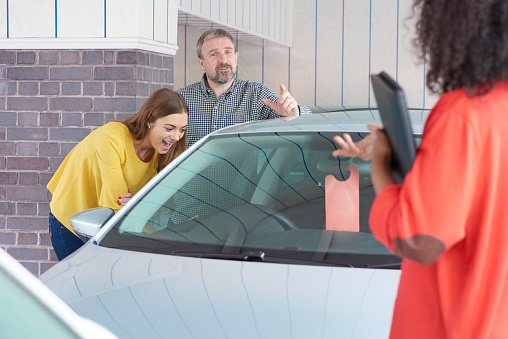
It can be a stressful time when you’re looking at affordable used cars and entering the buying process. There are myriad tangibles to interact with and research, from fuel efficiency to dependability, from number of seats to number of miles on the odometer. Above all else, especially when shopping for a family vehicle, the safety of that car is foremost in many buyer’s minds. The Insurance Institute for Highway Safety (IIHS) uses an exhaustive rubric for measuring the safety capabilities of a given vehicle, resulting in an overall “crashworthiness” rating of either Good, Acceptable, Marginal, or Poor. Understanding what tests these vehicles undergo and how the IIHS makes their judgements can help the consumer make an informed decision on the overall safety of a vehicle.
The IIHS divides a car into four zones to be tested and rated:
The Moderate Overlap Front covers the driver and passenger compartments and how they react primarily to head-on collision scenarios. These tests measure the intrusions of the vehicle into the space the driver and passenger occupy, measuring the damage that could be suffered based on the car crumpling inward on and around them.
The Side category is fairly self-explanatory, as it pertains to the vehicle’s’ ability to handle T-bone type collisions. This metric applies strongly to the safety of any passengers in the back seat(s) of a vehicle. These tests also measure the overall durability and capacity of the vehicle’s safety cage and its ability to withstand potentially devastating collisions.
The Roof Strength component of the IIHS test measures the car’s ability to protect its passengers during rollover collisions. This measurement can also be affected by the strength of the safety cage and the ability of a car’s crumple zones to maintain the integrity of the roof during an accident.
Finally, though most importantly, the Head Restraint and Seats category determines how well a vehicle protects passengers from neck and back injuries, particularly in read-end collision scenarios. Rear-end accidents account for over 40% of all collisions in the U.S. annually, and result in the highest number of neck and back injuries.
The following used cars have received some of the highest IIHS safety ratings in their respective classes.
2007 Toyota Camry Solara
This mid-sized sedan debuted with a smattering of impressive accolades, among them Edmund’s Lowest True Cost to Own award and J.D. Power’s Top Vehicle Dependability award. The IIHS substantiates this claim with its overall stellar rating of the vehicle’s crashworthiness. Notably, the Moderate Overlap Front rating was exceptional, due in part to the Camry’s standard front and rear head curtain airbags and front seat-mounted torso airbags
2013 Dodge Avenger SXT
Rated a Top Safety Pick by the IIHS when it came out, the Avenger’s crashworthiness is one of the best for any mid-sized sedan. Front and rear curtain airbags, front seat-mounted torso airbags, electronic stability control, and antilock brakes are all standard safety features included with the Avenger, helping it earn its safety rating.
2005 Honda Odyssey
A perennial minivan heavyweight, the Odyssey is a worthwhile safety investment, outstripping the rest of the competition in its IIHS ratings. Most minivans don’t score well in most collision categories, especially in front-collision scenarios. The Odyssey has consistently received top marks in all categories, making it one of the safest minivans on the road
Each of these used car models are an excellent safety pick, and a worthwhile investment. If you’re interested in purchasing any of these affordable used cars, search our used vehicle inventory and see what we have available or come visit us, the experts for cars and credit, at one of our seven, convenient Arizona locations. Contact us today to discuss financing options to ensure the safety and reliability of your transportation.
